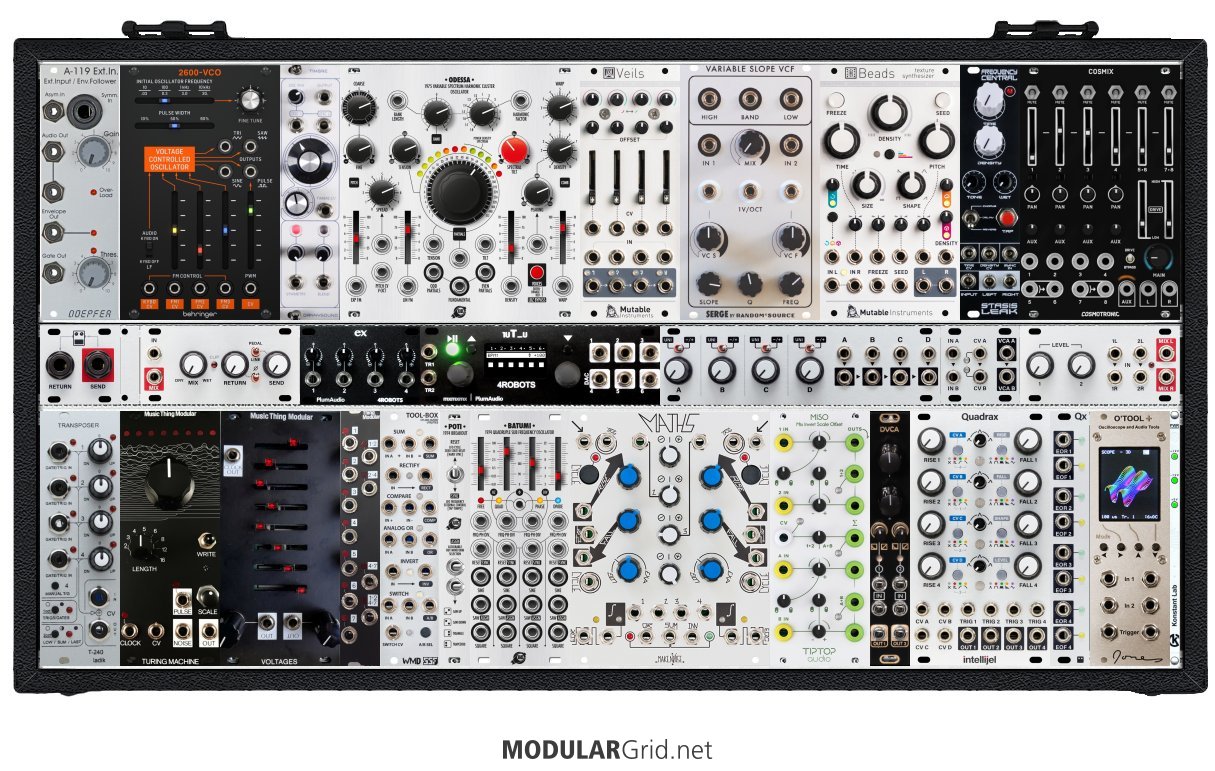+1 on the drum machine. Given the expense and impracticality of drum modules + sequencer(s), you can get more done with something OUTboard that's capable of reading the modular's clock. Also, no DFAM in the main cab. It's burning up all the space you need for those "helpers".
Gonna wail on this...back in a bit...

OK...some of the earlier modules are gone, mainly due to there being better module choices. The tile row is actually a big help here.
TOP: This is what you want for an input. The Doepfer A-119 is pretty much the standard, and it not only has adjustable input gain, it gives you a gate out when audio is present above a set threshold, and it's got an envelope follower that lets you use the actual level contours from the inputted device. I then coupled a B.2600 VCO with a Dannysound variation on the Buchla 259's waveshaper, and followed this with the Odessa, like you'd mentioned. Veils provides the VCAs here, since you'll want that exponential VCA response for audio. Serge filter is next (good choice!), then Beads gives you granular methods for sound manipulation, and the Stasis Leak gives you mono-to-stereo chorus, reverb, and a tap delay. Lastly, the Cosmix gives you a stereo mixer with four mono inputs, two stereo, and an AUX send. Since the AUX bus here is mono, using this with the Stasis Leak is a good match.
TILES: I tossed the input/output module because it didn't have the capabilities of the A-119 and because the stereo mixer allows you to fly in your effects against the main output signal. The Cosmix has those as well, but the Stereo Mixer lets you separate your effects from the main signal for better mix control. First up, there's a send/return I/O for a stompbox to join in the mayhem. Next, I opted for a Temps Utile for your main clock/sequence generator. After that is an Intellijel QuadrATT for mixing, attenuverting, and the like. I put in a Stereo VCA so that you can have VCA control over whichever levels to the Stereo Mixer you prefer.
BOTTOM: Starts with a Ladik sequential transposer so that you can transpose sequences from the T_u or the Turing Machine by specific steps. The Turing Machine is next, with the addition of the Voltages and Gates expanders. Following this is an SSF Tool Box, which is a killer multi-utility module with a lot of functions that'll play nice in here. Batumi (with Poti) is after that, then the Maths. But after the Maths, I added a modulation manipulation section with a Tiptop MISO and a dual Veils VCA clone from After Later. Main EG is the Quadrax, which also has the Qx expander for some complex multi-envelope madness. I left the O'Tool in, but moved it to this row. And the little white sliver at the end is one of Konstant Labs' PWRchekr, which lets you have visual feedback on your DC rail health.
I don't think you'll miss the stuff that was removed. This build not only fills the rack out, it takes things to a higher functional level than previously.

